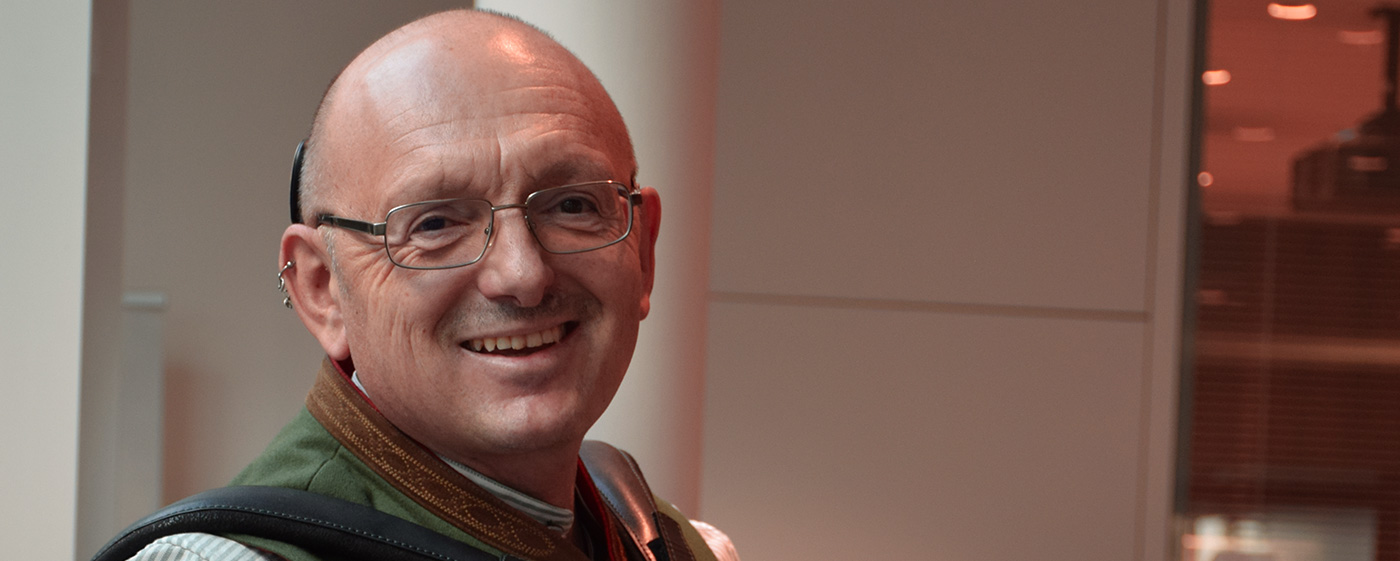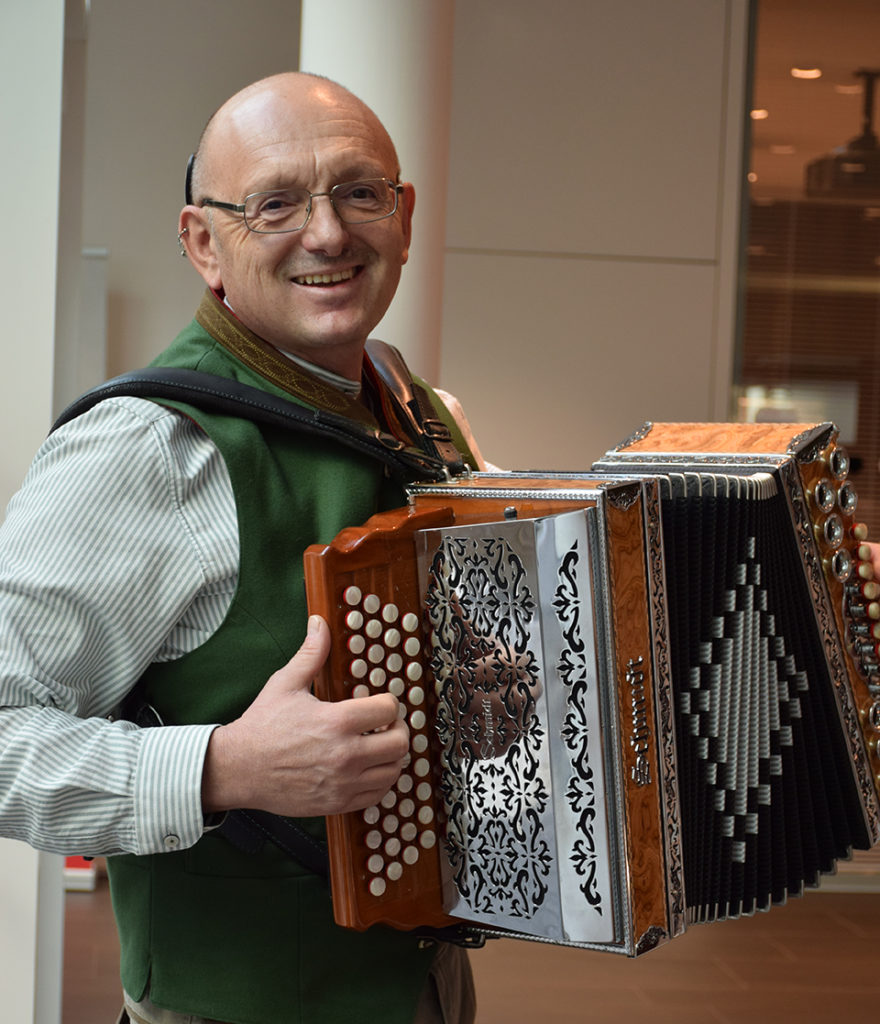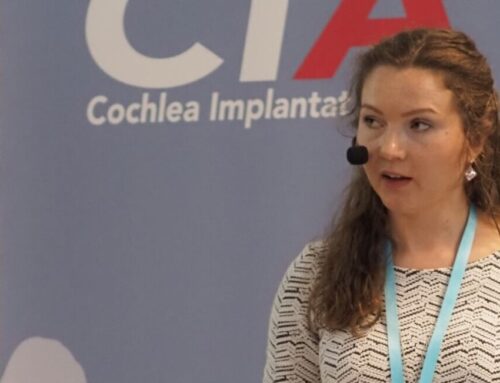The connection between binaural hearing and music
An insight into why binaural hearing and music complement each other, lead to better speech understanding and why together is better than alone.

Two is better than one. This slogan also holds true for hearing. Those who can only hear with one ear have to do with compromised hearing, no matter whether they are deaf in one ear or only use one hearing implant. “I always had to make sure that I was sitting with my hearing ear towards my conversation partner”, single-sided deaf Austrian Tanya remembers the time before she received a cochlear implant (CI) in her right ear.
Making sure that conversation partners are located next to the hearing ear is just one challenge people with only one hearing ear face. Directional hearing, locating where a sound is coming from, and speech understanding in noisy situations can also only be fully achieved with two ears.
Hearing and music: both for the soul and for the ears
Music, which plays an integral role for our emotional well-being, sounds richer, fuller and more dynamic with two ears. Numerous studies have proven that music not only soothes our souls but has positive effects on our hearing abilities.
This is true for hearing implant users, too. Rehabilitation programmes that focus on music also foster speech understanding in noise.
Users who make music themselves gain even more benefits. Many take up their instruments again after implantation. Heinz, who loves playing his Styrian harmonica, is one of them. A couple of months ago he received a cochlear implant in his right ear. Soon after his first fitting he played his instrument again….and was heavily disillusioned. It sounded awful. After he had recovered from his disappointment, he decided to change the situation. Unflinchingly, he continued to practise, at home on his own, in the ENT clinic with his music therapist and during a three-week hearing rehab stay in Germany. His persistence was rewarded and Heinz is now enjoying the rich and full sound of his beloved harmonica like before.
In addition to specialised music rehab, the perfect interplay between hearing aid and CI audio processor is essential. They must be fitted to each other.
Heinz emphasizes how binaural hearing improves music sounds experience. “It sounds okay with the hearing aid, but with the additional CI it gives me goosebumps”, the hobby musician states enthusiastically. Studies support his statement, which is also true for individuals with profound hearing loss using bilateral cochlear implants.

Bimodal CI user Heinz and his greatest passion, his Styrian harmonica.
The voice – the instrument sitting inside you
You have never played a musical instrument? No problem! There is one instrument that is sitting right inside you: your own voice. Singing is fun and beneficial for both children and adults with hearing implants. A trained voice also enhances your speaking voice. Articulation, loudness, intonation and voice modulation improve. People who sing on a regular basis have better control over their voice. Singing teaches children new vocabulary words and improves their speech production in a playful way.
The slogan “two is better than one” is true for singing as well. One ear cannot provide directional hearing. Singers in a choir or accompanied by a musical instrument miss out on the fine musical details. This shows immediately in intonation, pitch and rhythm. The best musical score is of no avail if the singer lost track and does not know when to set in again.
Together is better than alone – binaural hearing and music
A choir provides a number of benefits beyond hearing. Choir members meet other people who also love to sing, exchange opinions and communicate. This opens the door for an active social (choir) life. “Listening to each other” should be the credo of every member in a choir. This will result in a beautiful sound of a choir. Listening to each other also trains hearing the fine musical details. In a choir, singers need to hear the different voice groups, a demanding task for spatial hearing and speech understanding in noise.
Musicologist Johanna Boyer, a CI user with single sided deafness recommends: “The weakest part in the hearing process should be able to contribute more to the overall sound and should therefore get special support.” She recommends music training with the cochlear implanted ear alone, without using the other – hearing – ear. This can be done with assistive devices such as AudioLink and streaming music straight into the audio processor.
Interested in singing together rather than alone? Not sure, though, whether you are good enough to join a local choir? A singing workshop for hearing implant users might be a good alternative: make music together, sing together, train your voice, exchange experience, receive tips and tricks from experts – that’s what you get on top of all the fun and long-term hearing success!
Motivated by passion
Not every CI user will be able to fully appreciate music (again). Some lack motivation, the others support. Even though research has proven that music training enhances hearing performance with an implant, interindividual differences are significant. Those who consider music important for their personal life, who are passionate about listening and playing music, are likely to reach good results over time.
Yet it takes training and time for implant users until music sounds like it did before the hearing loss. So take your time and be patient. Your brain’s neuroplasticity will help you. And success will come.






